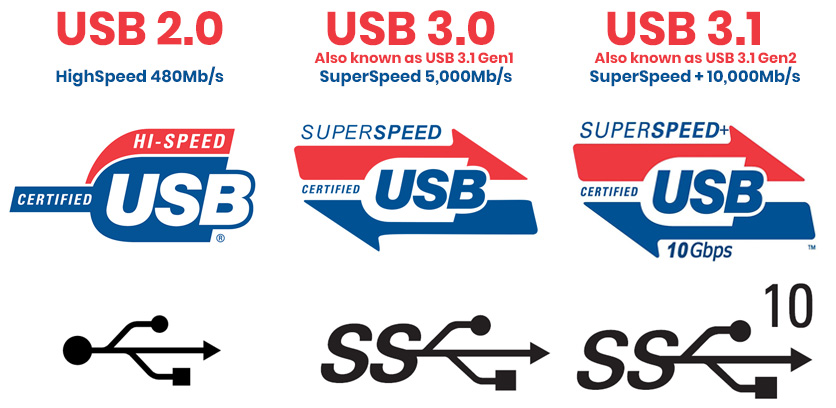
Any device that is in this power state does not have to reduce its power consumption. The latest version of USB 2.0 includes all of the specifications of the earlier models however, it also includes the capability to add a new power state between enabled and suspended states. All of these permutations came standard with technology, compliments of Engineering Change Notices (ECN). This version of the USB includes a plethora of permutations that all offer different modifications not found on the earliest versions of the USB (namely, 1.1). USB version 2.0 added a substantial amount of maximum bandwidth – 480 Mbit/s, known as hi-speed. This was the earliest version of USB to be widely distributed and put into use. USB version 1.1 fixed those problems found in 1.0 most of the problems usually related to the hubs. The original USB had a very limited distribution. Because of the timing and power limitations, version 1.0 didn’t allow for extension cables, or pass through monitors.
#Usb 1 vs usb 2 vs usb 3 full
USB 1.0 specified data rates of 1.5 Mbits/s – this is known as a low bandwidth) and 12 Mbits/s – known as full bandwidth.
#Usb 1 vs usb 2 vs usb 3 upgrade
USB version 1.1 is an upgrade from the first permutation of the USB.

It also is a port through which users are capable of inserting flash drives and external hard drives. The USB is used mostly to connect outside hardware to the computer – such as the mouse, keyboards, printers, and digital devices (cameras, MP3 players, etc.). Parallel ports are most commonly known as printer ports (or Centronics ports).
#Usb 1 vs usb 2 vs usb 3 serial
The USB was created in hopes of replacing a wide variety of serial and parallel ports (that is a physical interface that transfers information in or out one bit at a time, and a type of interface that connects various peripherals, respectively).

In the future, with newer generations of USB standards and the arrival of USB-C, there will be even better improvements.Universal Serial Bus (also known as USB) is a specification that establishes communication between devices and host controllers (generally these host controllers are personal computers). When it comes to USB 3.1 Gen 1 and Gen 2, the only difference is speed and they're backwards compatible with USB 3.0 and USB 2.0. USB came a long way from when it was first introduced and will continue to advance in the future. Increase host flexibility to configure bandwidth, power management and other performance-related parameters for system needs.


USB 3.0 was released over ten years ago in 2008 and it was the third major revision to the USB standard. We’ll examine the difference between USB 3.1 Gen 1 and Gen 2, and talk about why Gen 2 is better than Gen 1, as well as providing other helpful information that will allow you to understand everything you need to know about USB standards. The USB standards and their specifications can be a little challenging to understand, especially after their many updates.


 0 kommentar(er)
0 kommentar(er)
